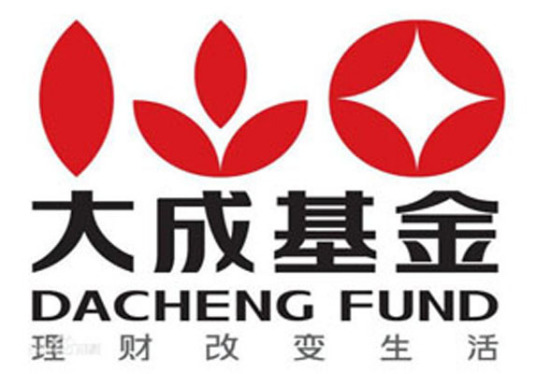静待花开终有时——大成基金2025年固收云端策略会
文章语言:
简
繁
EN
Share
Minutes
原文
会议摘要
The fund managers and analysts of Da Cheng Fund discussed their expectations and investment plans for the fixed income market in 2025. Starting from a macroeconomic perspective, they analyzed market trends, interest rate movements, credit spreads, liquidity conditions, and the impact of policy regulation on the market. They particularly emphasized the need to seek a balance between risk and return through careful management and strategic adjustments in a low interest rate environment, in order to achieve long-term stable investment returns. They also put forward specific investment recommendations for different maturities and types of bond varieties. Overall, the fixed income research team of Da Cheng Fund is optimistic about the future market and values customer demands.
会议速览
At the 2025 Da Cheng Fund Fixed Income Cloud Strategy Conference, the speaker shared the current economic and market situation, emphasizing the importance of sticking to research-driven, long-term investment in a complex market environment. The conference discussed the future development trends of the market, response strategies, and Da Cheng Fund's determination to provide stable wealth management for clients. It particularly highlighted five key elements: in-depth research, flexible allocation, systematic risk control, investor communication, and team collaboration, to respond to market changes and achieve value growth. Additionally, it proposed focusing on alpha returns in a low-interest rate environment, and implementing strategies such as dynamically adjusting portfolio structures to improve returns.
Looking back at 2024, short-term bond asset rates fluctuated downwards, with policies providing ample liquidity. In 2025, it is expected that monetary policy will remain loose, with room for further cuts in required reserves and interest rates, and the liquidity environment will remain plentiful. There is room for repo rate cuts, and expectations for a decrease in deposit rates will lead to a decrease in the market rates for certificates of deposit, with the growth of asset management products increasing the demand for certificate allocations. The scale of liquidity market products such as money market funds will grow, providing ample market liquidity.
In 2025, the credit bond market is expected to maintain a good supply-demand relationship, with yield levels likely to decrease along with the trend of risk-free interest rates. Credit spreads are at relatively reasonable levels and are expected to compress, providing excess returns. With moderately loose monetary policy, there is room for risk-free interest rates to decline. Credit risks are lower for municipal bonds compared to corporate bonds, which have some uncertainty. Liquidity premium is an important factor affecting credit spreads, with tight supply-demand supporting the credit bond market. Overall, insufficient credit demand and lower deposit rates will drive an increase in credit bond allocation demand.
In a low interest rate environment, individual investors are increasingly interested in bond funds, focusing on green bonds, local government investment bonds, and financial bonds. Bond funds have become an important part of residential asset allocation, but the difficulty of investment is rising, and attention should be paid to trading strategies and term structure strategies. Holding period products are suitable for residential investment, characterized by stable returns, high potential returns, and liquidity management. Investment strategies tend to use dumbbell strategies to balance returns and drawdowns, with strict risk management being key.
In 2025, Zhu Haoran, the fixed income head fund manager of Dacheng Fund, reviewed and looked ahead to the bond market at the fixed income cloud strategy meeting. He pointed out that the bond market performed well in 2024, mainly due to ample liquidity environment and slightly improved financing demand. Looking ahead to 2025, he believes that with the background of high-quality development, traditional financing demands from large entities such as financing platforms and real estate will continue to decline, fiscal policy may remain balanced, and monetary policy will remain moderately loose, which will be beneficial for the overall performance of the bond market. In terms of specific investment strategies, he is optimistic about municipal bonds, financial bonds, and specific structural opportunities, especially the tightening net supply of municipal bonds and the favorable supply and demand situation of financial bonds, as well as opportunities in green finance bonds, long-term financial bonds, and interest rate differentials of large local commercial banks. In addition, he also emphasized the importance of paying attention to signals of economic improvement and various investor behaviors.
In 2024, short-term bond funds showed different absolute returns and maximum drawdowns based on different strategies such as currency enhancement, short-term bonds, and intermediate-term bonds. From the perspective of absolute returns benchmark, despite a slight decrease in interest income, the maximum drawdown only slightly expanded; however, from the perspective of relative returns benchmark, actively managed short-term bond funds showed a trend of increasing returns and risks, with the maximum drawdown significantly magnified. Faced with the market in 2025, emphasizing the importance of considering the maximum drawdown while determining the target investment return rate, and proposing the search for risk-return efficient frontiers, actively managed excess returns, and passively managed absolute returns as investment strategies, aiming to create excess returns for investors.
Since 2008, the bond ETF market in the United States has rapidly developed, benefiting from declining interest rates, decreasing investor risk preferences, and optimized ETF regulations. The main investors in US bond ETFs include pension funds, insurance companies, and investment advisors, who have significantly increased their allocation to US bond ETFs. US corporate bond ETFs have become an important component of bond ETFs, accounting for over 20% of the market. In addition, ETFs provide long-term stable excess returns through low fees, low trading frequency, and strict index tracking. These experiences have important implications for Chinese investors seeking products in a low interest rate environment, and it is suggested to choose index products issued by high-quality issuers to reduce the expected maximum drawdown.
Wang Xi, from the Fixed Income Division of Da Cheng Fund Headquarters, shared his insights on bond variety rotation. He analyzed the market performance of bonds with different terms and types in 2024, pointing out that government bonds and local bonds have higher risk-return ratios in one-year term varieties, while the three-year local bonds offer the best value for money. In addition, he discussed the cost-effectiveness of credit bonds and interest rate bonds, emphasizing the importance of selecting different bond varieties in different market environments. Wang Xi also shared how to make investment decisions through top-down macroeconomic analysis and Merrill Lynch's clock theory, combined with quantitative indicators such as interest rate differential percentiles, to achieve stable growth in portfolio returns. He also mentioned the importance of fine classification of credit varieties and considering liquidity and risk preferences when managing portfolios.
要点回答
Q:In today's event, what do you want to say to your present and future self?
A:Today's every stroke and character is a sketch and layout of self-awareness, depicting reality, and dreaming about the future. I hope that starting from now, through gradual efforts, like a light illuminating the sky, let the light spread from the horizon, conveying sincerity and ideals, taking responsibility, and looking forward to the vision.
Q:What is the theme of the DaCheng Fund Fixed Income Cloud Strategy Conference, and what is its implication? What are the five key factors that the DaCheng Fund Fixed Income Research Team will focus on in the new year?
A:The theme of this meeting is "Eventually, the flowers will bloom", implying that in the midst of market fluctuations and challenges, the Grand Fund's fixed income investment research team adheres to rationality and professionalism, expecting value to blossom and achievements to be harvested. Through discussing the future development prospects of the market with everyone, sharing thoughts and strategies, we aim to help achieve long-term stable wealth management goals. In the new year, the team will focus on five key elements: in-depth research, data empowerment; flexible allocation, dynamic adjustment; systematic risk control, steady execution; investor communication, transparent communication; team collaboration, cross-disciplinary integration.
Q:At the 2025 Grandcon Fixed Income Cloud Strategy Conference, which topics will be discussed?
A:This summit will delve deep into analyzing the market performance of 2024 and sharing strategies for the market in 2025. We will discuss market outlook and operation strategies for interest rate portfolios, and welcome everyone to participate in exchanging views on market trends and solutions, in order to bring more insights and value to customers together.
Q:How was the global economy and capital markets in the past year, and what are the main focuses of the fixed income investment research team at Grand Fund?
A:Over the past year, the global economy and capital markets have been complex and volatile, with frequent market sentiment fluctuations. However, the Da Cheng Fund's fixed income investment research team has always adhered to the concept of research-driven, long-term investment, striving to enhance overall competitiveness, navigate short-term fluctuations, and provide stable and reliable returns for clients. The team delves deep into macroeconomic environments, analyzes market trends, evaluates asset prices, and helps clients achieve long-term wealth growth in different market conditions through refined asset allocation solutions and professional investment services.
Q:Based on the current macroeconomic situation, what are the main objectives and strategies of China's monetary policy?
A:Against the background of stable economic growth and a continuous decline in the GDP deflator index, the People's Bank of China has clearly identified the goal of raising prices as a key task, and actively injected money through quantity instruments to promote a rebound in inflation expectations. The actual lending rate will continue to decline, providing a foundation for overcoming the debt cycle. Drawing on overseas experiences, a combination of loose monetary and fiscal policies will help stabilize prices and hedge against debt risks. China will also implement a more proactive fiscal policy and moderately loose monetary policy.
Q:What are the new features present in the bond market currently, and how should investment strategies be adjusted for the future?
A:The central interest rate of the bond market continues to decline, with fluctuations not converging. Capital gains are still the main source of income for fixed-income assets. In a low interest rate environment, maintaining a strategic long position and combining tactical flexibility strategies to seek yield through duration is one of the most effective strategies, while also focusing on alpha returns. In portfolio management, dynamically adjusting the structure, selecting varieties with high certainty and protective yield differentials, and using duration sub-strategies, term rotation, and other means to seize opportunities brought by changes in the yield curve shape, achieving steady growth in net asset value.
Q:What are the characteristics of the trend of short-term bond asset interest rates in 2024? What is the outlook for monetary policy and liquidity in 2025?
A:In 2024, short-term asset rates represented by time deposits are showing a trend of fluctuating decline; and every quarter, corresponding policies are being introduced to maintain loose monetary environment and sufficient liquidity. In 2025, it is expected to maintain a moderately loose monetary policy environment, with room for further reserve requirements and interest rate cuts. Monetary policy tools will become more diverse and flexible, helping to keep the liquidity environment loose and abundant. Repurchase rates, such as the DR, still have room to decrease, but are affected by factors such as exchange rates, market leverage ratios, and government bond supply. Lowering deposit rates will push time deposit market rates further down, and the growth of money market funds will increase demand for time deposits. Overall, in the context of loose monetary policy, short-term assets and liquidity markets are expected to remain loose.
Q:What are the key measures in macroeconomic policy?
A:In terms of the economy, in 2024, there was a sudden wave of recovery. On a macroeconomic policy level, there were two reserve requirement ratio cuts (a total of 100 basis points) and two interest rate cuts throughout the year. Additionally, policies such as equipment upgrades, trade-in programs, the issuance of ultra-long government bonds, and various debt restructuring policies were introduced to provide a favorable monetary easing environment for economic recovery.
Q:How to look forward to the credit bond investment strategy in 2025?
A:It is expected that the yield of credit bonds will follow the trend of risk-free interest rates and decrease by 2025, with the credit spread expected to compress, providing excess returns. In terms of credit risk, due to the decrease in the number of default entities and the promotion of a comprehensive debt policy, the risk of default of urban investment bonds is relatively low, but there is uncertainty in the basic fundamentals of corporate bonds. In terms of liquidity premium, the supply and demand relationship of credit bonds is good, the redemption pressure on the liability side is limited, and the relative lack of credit demand coupled with the early redemption of high-interest urban investment bonds will put pressure on small and medium-sized banks to allocate insufficiently. Meanwhile, the stability and growth of the size of wealth management will also bring about a demand for credit bond allocation. Therefore, structural opportunities such as green bonds, urban investment bonds (especially those that have undergone the debt restructuring process), and financial bonds are worth paying attention to.
Q:In the current low interest rate environment, how to grasp the trading strategies of credit bond investment?
A:In the current low static low interest rate environment, in addition to traditional allocation strategies, the mastery of trading strategies should be emphasized, especially in the context of strong supply and demand for long-term credit bonds and increasing trading activity, creating conditions for the use of term structure strategies. At the same time, Da Cheng Fund will strictly control credit risk, and through precise selection of varieties and individual bonds, as well as accurate control of trading strategies, continue to create steady investment returns for investors.
Q:In 2025, how do you view the difficulty of investing in bond funds and the impact of changes in interest rates on the bond fund holding experience?
A:In 2025, deposit interest rates are still in a downward trend, bond funds remain an important asset allocation for residents, but investment difficulty has increased compared to the previous two years. In a low-interest rate environment, interest income has decreased by about 100 basis points or more, while capital gains have become more difficult to obtain. In addition, after the net value of wealth management products, institutional convergence behavior may lead to increased market volatility.
Q:Why are holding period products more suitable for residents' investments? What are their characteristics?
A:Hold period products have requirements for the shortest hold period and rolling hold period, which restrict short-term chasing and killing behaviors, and are beneficial for enhancing investment experience. The characteristics of these products are stable income, focusing on controlling drawdowns and ensuring minimum returns. Potential returns may be higher than money market funds and ultra-short-term debt products, and they can meet the demand for flexible subscription and redemption of individual investors and portfolio flexibility.
Q:How is the investment strategy for hold-to-maturity products allocated between risk and return?
A:Hold period products adopt a semi-dumbbell investment strategy. The core position is mainly focused on obtaining coupon income from medium to short-term, medium to high rating credit bonds. The flexible portion utilizes leverage to engage in short-term timing of long-term interest rate bonds and government bond futures. The fund strictly manages position ratios, stop-loss levels, and holding periods.
Q:How to balance drawdowns and returns in bond investments, and what are the main risks involved?
A:The key to balancing drawdowns and returns lies in proactive risk management. Bonds investment major risks include duration risk, which needs to be managed through top-down research and market trend analysis; credit risk and liquidity risk also need to be highly valued, and can be mitigated and addressed through strict investment discipline such as improved and executed plans, continuous research and timely trading. Continuously reflecting on and iterating risk control mechanisms to adapt to market changes is essential to ensure an enhanced holding experience for investors.
Q:What key factors will affect the investment environment for the bond market outlook in 2025?
A:In 2025, as the Chinese economy shifts towards high-quality development, traditional financing needs such as financing platforms and real estate financing will continue to decline. Improvements are needed in the balance sheets of households and expectations for employment, and the process of expanding credit will also take time. Fiscal policy is expected to remain balanced, with low-cost local government debt possibly replacing high-cost hidden debt. Monetary policy will maintain a moderately loose stance, which is overall favorable for the bond market performance. At the same time, attention will also be paid to signals of economic improvement, such as improvement in the year-on-year growth of social financing, an increase in M1, and strong sales in commodity housing in major cities.
Q:In the current financial bond market environment, what is the supply and demand situation for financial bonds? What is the allocation situation of financial bonds in wealth management?
A:Currently, the broad credit is in a period of mild expansion, with the net supply of financial bonds not exceeding the recent annual average. Bank bonds are benefiting from capital regulations and government capital injections, as the demand for commercial bank bonds to supplement capital is decreasing. The overall supply and demand for financial bonds is good. In the near term, the credit spread of financial bonds has increased, as wealth management products have not increased their allocations to secondary capital bonds due to seasonal contraction at the end of the year and smoothing of valuation regulations. This has led to the 2Y not fully following the downward trend of interest rate bonds. However, it is expected that with the implementation of regulations on interbank demand deposit rates at the beginning of the year, the centralization of funds will decrease, leading to an increase in wealth management scale and a possible contraction of credit spreads for financial bonds.
Q:How do you view the structural opportunities that have emerged in the internal finance bonds of 2024, such as green finance bonds and the spread compression of large local urban commercial banks? What are the characteristics of Tier 2 capital bonds?
A:In 2024, we observed frequent structural opportunities, such as green financial bonds, and periodic fluctuations in long-end interest rate spreads. There is also a chance for compression in interest rate spreads for large local city commercial banks. Compared to investment-grade bonds, secondary capital bonds show more obvious volatility. Due to the converging behavior of institutional investors, interest rate attributes are more likely to experience sharp fluctuations. With the premise of managing liabilities well, we will actively seize such short-term trading opportunities.
Q:In the review of the performance of short-term bond funds in 2024, what is the relationship between absolute return and maximum drawdown? And what about relative return?
A:In terms of absolute returns, currency enhancement strategies, short-term debt strategies, and short-medium-term debt strategies have seen a slight increase in maximum drawdown as interest income decreases, but still maintain a relatively good level. However, actively managed short-term bond funds have seen a significant increase in maximum drawdown, and have traded off performance relative to excess returns at the cost of increasing maximum drawdown. In terms of relative returns, actively managed short-term bond funds have experienced a simultaneous increase in returns and maximum drawdown, but there was a significant change in 2024.
Q:How to balance investment return goals and maximum drawdown goals, and how to manage the combination in short-term bond fund investments?
A:Investors should look for the efficient frontier of risk and return, set a target investment return based on the maximum drawdown target, and choose products that are above the efficient frontier in top-performing funds. At the same time, investors also need to pay attention to the absolute return of passive management products, which strictly track the index, avoid chasing the market's ups and downs, reduce trading costs by lowering trading frequency, and achieve an effective balance between investment returns and maximum drawdown.
Q:Translation: What is the development situation of ETF in the overseas bond market and where does it provide excess returns?
A:Overseas bond ETFs have rapidly developed since 2008, with their share continuously increasing, especially favored by institutional investors such as pension funds, insurance companies, and investment advisors. US corporate bond ETFs are an important component, tracking specific maturity level corporate bond indices, with maturity being an important classification indicator. ETFs provide three types of long-term determinable sources of excess returns: first, low fees; second, low trading frequency to reduce trading costs; and third, strict tracking of indices to avoid active management investors amplifying risk exposure in bull markets and hastily reducing risk exposure in bear markets, thus maintaining portfolio stability.
Q:In the current low interest rate environment, how should investors find suitable financial products to balance target investment returns and maximum drawdown?
A:In a low interest rate environment, investors may consider choosing high-quality passive management products, such as index funds. These products are typically managed by reputable issuers and may issue longer-term bonds during periods of low interest rates, thereby extending the duration of the index and increasing expected returns. In addition, investors should also reduce the proportion of high-volatility bond asset classes to reduce the expected maximum drawdown of passive management products.
Q:In the rotation of bond varieties, what are the performances and characteristics of different bond varieties?
A:Translate into English: Treasury bonds, policy bank bonds, local government bonds and other interest-bearing debt varieties have low static yield but strong liquidity; as the static yield of the bond varieties gradually increases, liquidity weakens and elasticity strengthens. Specifically looking at the performance of the bond market in 2024, the one-year variety Chinese bonds and local government bonds had a significant decline in cumulative yield before September 23, and had the highest risk-return ratio. Among the three-year varieties, treasury bonds and local government bonds outperformed medium-term notes and commercial bills. In the five-year varieties, local government bonds and secondary capital bonds of commercial banks had a significant decline in yield, with a relatively high cost-effectiveness. In the long-term varieties, the ten-year treasury bonds, local government bonds, medium-term notes, and commercial bills all had a significant decline in yield, while secondary capital bonds had greater elasticity.
Q:How to optimize the allocation of interest rate bond portfolio based on market conditions and spread percentile?
A:Based on the market analysis in 2024, when credit spreads are below a certain percentile, interest rate bonds have higher cost-effectiveness, especially when interest rate bond adjustments are large, short-duration credit bonds have an advantage. Medium-term ordinary commercial financial bonds and local government bonds have higher cost-effectiveness, while long-term tier 2 capital bonds are attractive due to their greater flexibility. By conducting top-down macroeconomic research, determining economic phases based on the Merrill Lynch Clock Theory, and using duration and leverage strategies to select the optimal DV01 portfolio, while utilizing quantitative indicators such as the percentile curve shape of credit spreads to explore excess returns in bond sectors and rotation.
Q:How to achieve refined classification in credit portfolio management and create excess returns?
A:Regarding credit types, they can be further divided into various categories such as private enterprises, industrial bonds, real estate (including central SOEs, local state-owned enterprises, private enterprises, etc.), urban investment bonds, and financial institutions. Fine classification and meticulous cultivation are conducted for urban investment bonds, real estate bonds, secondary capital bonds, and perpetual bonds with different terms, guarantee conditions, special clauses, etc., in order to create excess returns.
Q:How to dynamically adjust the asset portfolio according to customer needs and market conditions to achieve stable growth?
A:When managing a portfolio, assets that can generate returns and maintain liquidity are selected based on the client's risk preferences, and arranged rationally. In different market conditions, such as when bond yields are more positive, the portfolio exposure is increased, while stress tests are conducted to calculate market changes at different drawdown levels, forming a risk control framework. Based on market analysis and liability drawdown requirements, the parameters of the asset allocation are adjusted within an acceptable range to ensure that the portfolio achieves sustained and steady growth within tolerable drawdowns.

大成基金
Follow





